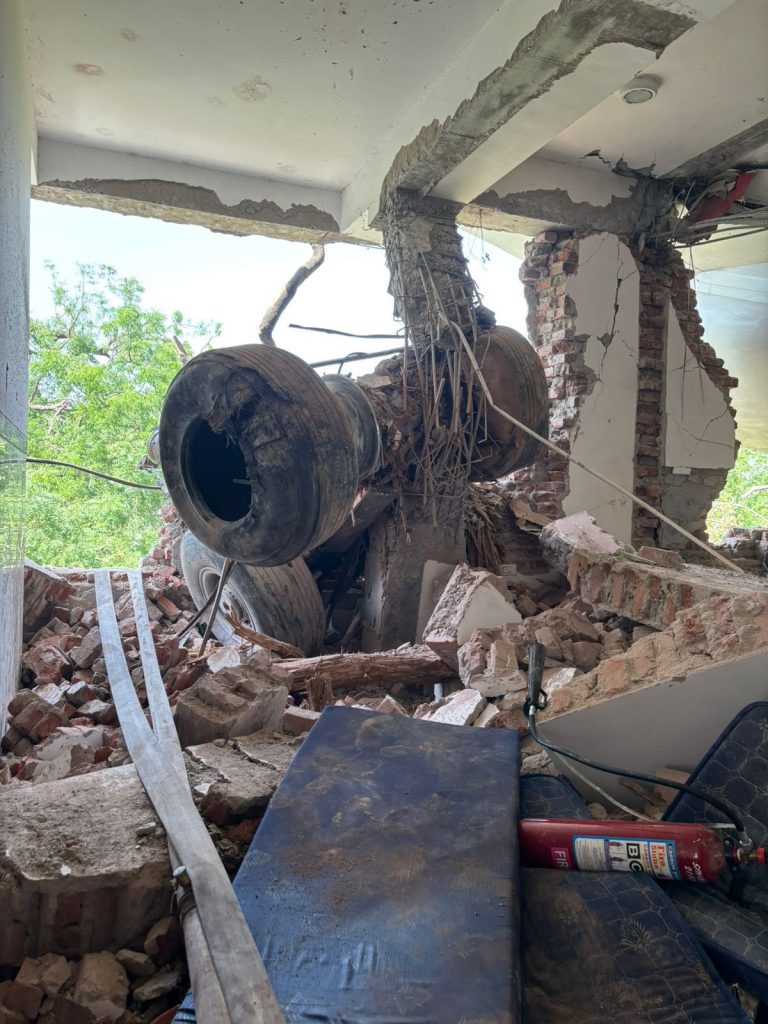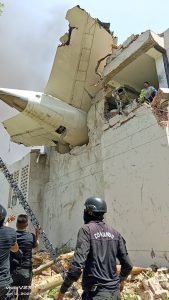In what is now being described as one of the deadliest aviation disasters in Indian history, a passenger aircraft carrying more than 200 people crashed into a hospital building in Ahmedabad on Thursday afternoon, killing all but one onboard and dozens more on the ground.
The crash occurred around lunchtime when the aircraft, a Boeing wide-body jet, suddenly veered off its flight path and slammed into a hospital complex adjacent to Sardar Vallabhbhai Patel International Airport.
Inside the hospital, a group of junior doctors and MBBS students were gathered in the cafeteria during their lunch break. Tragically, between 50 to 60 medical interns were confirmed dead at the scene.
Emergency responders and rescue workers are battling flames and rubble to retrieve bodies and survivors from the devastated hospital structure. Hospitals across Ahmedabad have issued urgent appeals for blood donations to help the injured.
“Ahmedabad hospitals are in dire need of blood. If you’re in the area, please come forward and donate — you could save a life today,” said a spokesperson from Civil Hospital.
The plane was reportedly carrying 242 passengers — 169 Indian nationals, 73 foreigners, and among them, the former Chief Minister of Gujarat, Vijay Rupani. No survivors have been found from the aircraft.
Initial reports suggest that the ill-fated aircraft was maintained under a deal struck in February 2025 between Air India and Turkish Technic, a Turkish maintenance firm.
The agreement has recently come under government scrutiny amidst rising geopolitical tensions between India and Turkey. Aviation authorities have launched an immediate probe into the crash, with particular focus on technical faults and maintenance lapses.
Condolences have poured in from around the world. French President Emmanuel Macron issued a statement: “Deeply saddened by the tragic plane crash in India. Our thoughts are with the victims’ families and Prime Minister Modi during this time of sorrow.”
Prime Minister Narendra Modi is expected to visit the crash site later today, while aviation and defense agencies remain on high alert as investigations unfold.
The devastating incident has plunged the India into mourning and raised serious questions about air safety oversight and foreign technical collaborations in critical sectors.

